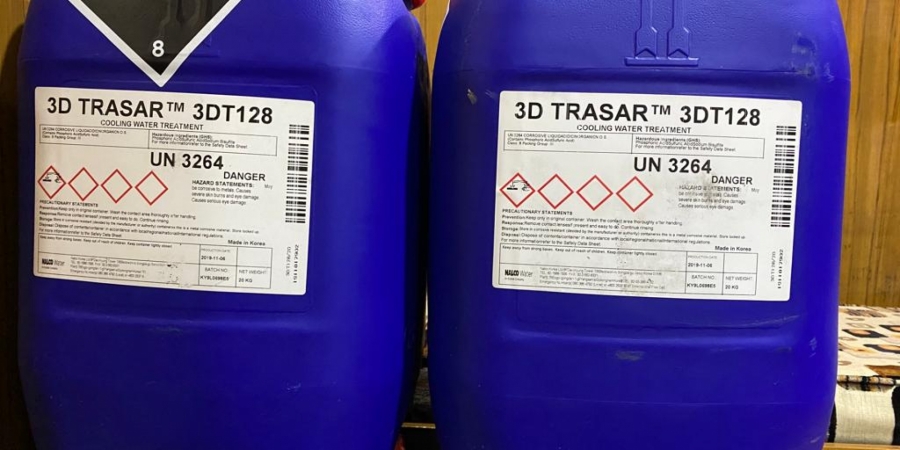Other Product
- Industrial Chemical,Al-Amin Traders is a premier importer and supplier of a comprehensive range of basic and hazardous chemicals, with a specialization in water treatment solutions for various industries across Bangladesh. Our unwavering commitment to quality and safety ensures that we deliver products that meet the highest industry standards. We are authorized licensed off all kind of commercial acids, we strictly adhere to all safety regulations and compliance requirements set forth by the Bangladesh government. Al-Amin traders is the member of “Bangladesh Chemical & Perfumery Merchant Association” & member of “Bangladesh Scientific Instrument Dealer Association” also member “Bangladesh Acid Merchant Association” We proudly serve as an enlisted supplier for the Bangladesh Director Gen
- Analytical Chemical
- Water Treatment Plant
- CHEMITECH MBC - 372 (Liquid), Boiler Daily Dose Chemical for Scale and Corrosion Inhibitor.
- Nalcool 2000 Close circuit / Radiator / Engine Coolant
- Power Plant Flashing Chemicals Supplier
- Laboratory Equipment
- Boiler Chemicals Powder
- Nalco 3DT 128 Cooling Tower Open Loop Chemical
- NALCO 3D TRASAR® TRAC109 Closed System Treatment
- COOLING TOWER NT 0562, Cooling Tower daily Dosage Chemical for Scale and Corrosion Inhibitor.
- ASR DISPERSE 8331
- ASR DISPERSE 8331 Multi Functional Boiler Water Treatment Our unique formulation actively inhibits scale buildup, ensuring consistent heat transfer and maximizing energy efficiency. Proven Track Record: Backed by years of research and field success, Our chemicals are trusted by industry professionals entire the Bangladesh. Tailored Solutions: We offer customized chemical solutions designed to meet the specific needs of your Boiler System. Sustainability Focus: Our environmentally friendly formulations ensure compliance with regulations while promoting a greener future. Elevate your Boiler's performance today with our trusted daily dose chemicals where innovation meets reliability.
- ASR DISPERSE 7208 ,1. Scale Inhibitor: Helps prevent the buildup of scale (hard mineral deposits) in pipes and equipment. 2. Corrosion Inhibitor: Protects metal surfaces from rust and corrosion, ensuring longer equipment life. 3. Hard Water Compatible: Works effectively even with hard water, which contains high mineral content. 4. Best for Coal Boilers: Specifically designed to perform well in coal-fired boilers for better efficiency. 5. High Performance in Auto Rice Mills: Shows excellent results in automatic rice milling operations.
- ASR ASR DISPERSE 7208: 1. Scale Inhibitor: Helps prevent the buildup of scale (hard mineral deposits) in pipes and equipment. 2. Corrosion Inhibitor: Protects metal surfaces from rust and corrosion, ensuring longer equipment life. 3. Hard Water Compatible: Works effectively even with hard water, which contains high mineral content. 4. Best for Coal Boilers: Specifically designed to perform well in coal-fired boilers for better efficiency. 5. High Performance in Auto Rice Mills: Shows excellent results in automatic rice milling operations.

NALCO 3DT128
Coooling Water Corrosion and Deposit Inhibitor
PRODUCT DESCRIPTION AND APPLICATION
Product Bulletin:
The 3D TRASAR 3DT128 contains:
- Dual function phosphonate inhibitor for both cathodic (pitting) corrosion and calcium carbonate scale. The active material is a patented, proprietary Phosphinosuccinic Oligomer (PSO) and is resistant to reversion
- Orthophosphate inhibitor for anodic corrosion
- High-Stress Polymer 2 (HSP2) dispersant.
- Blend of halogen-stable azoles for copper corrosion inhibition.
3D TRASAR 3DT128 is designed for use in systems with recirculating water calcium concentrations between 50 and 1000 ppm (as CaCO3) at the targeted cycles when the pH is less than 8.7.
3D TRASAR 3DT128 programs contain no heavy metals such as molybdate or zinc and can be used in situations where heavy metals are limited by discharge regulations.
PHYSICAL & CHEMICAL PROPERTIES
These properties are typical. Refer to the Safety Data Sheet (SDS) for the most current data.
|
Form |
Liquid |
|
Color |
Yellow |
|
Odor |
Organic |
|
Specific Gravity @60°F [15.5°C] |
1.11 |
|
pH (neat) |
1 |
|
Viscosity @68°F [20°C] |
4.5 cP |
|
Flash Point (PMCC) |
>93°C (200°F) |
|
Freeze-Thaw Recovery |
Complete |
|
Solubility in Water |
Complete |
ACTIVE CONSTITUENTS:
|
Active |
Function |
|
Phosphinosuccinic Oligomer (PSO) |
Mild steel corrosion protection & CaCO3 scale inhibition |
|
High Stress Polymer 2 (HSP2) |
Dispersant |
|
Phosphoric acid |
Mild steel corrosion protection |
|
Azoles |
Copper corrosion protection |
|
TRASAR #2 |
Product monitoring & control |
MATERIALS OF COMPATIBILITY:
Material compatibility data are only valid for product storage and feed systems.
|
Compatible |
Not Compatible |
|
Buna-N o-rings |
Brass |
|
Hypalon® elastomer o-rings |
Stainless Steel 304 |
|
Stainless Steel 316 Unwelded |
Stainless Steel 316 Welded |
|
EPDM o-rings |
Mild Steel |
|
Polyethylene Piping |
Neoprene o-rings |
|
Polypropylene Piping |
Viton® synthetic rubber o-rings |
|
CPVC |
Polyurethane o-rings |
|
PORTA-FEED® Liner |
Coated steel drum (phenolic) |
|
Plasite 4300 (vinyl ester) |
HDPE |
|
Plasite 7122 (epoxy phenolic) |
|
DOSAGE AND FEEDING:
3D TRASAR 3DT128 technology should be fed neat. Do not dilute the product or mix with other chemicals. Unstable reactions may occur that can deteriorate the product’s effectiveness.
3D TRASAR 3DT128 technology must be fed continuously to assure adequate levels of chemical residuals are maintained at all times. Slug feeding must be avoided because it will result in periods of high and low levels of chemical residual. Underfeeding could lead to corrosion and scaling conditions. Excessive chemical levels can result in product precipitation.
STORAGE:
3D TRASAR 3DT128 should be stored in a location where the product temperature can be maintained between 22oF (-6oC) and 110oF (43oC). In cold climates, heat tracing and insulation of exposed containers and transfer lines may be necessary. If freezing occurs, the product is recoverable. Move product to a warmer area to thaw and agitate to mix. Do not store longer than one year. Refer to the Safety Data Sheet (SDS) for the most current data.

